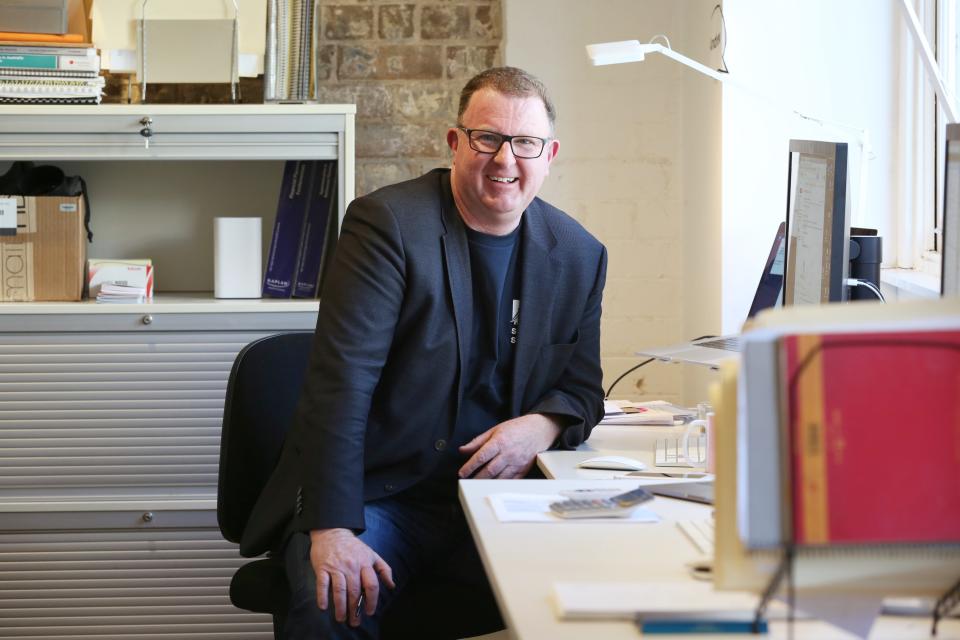Why the man who launched Flatmates.com.au has turned his eye to super

When Andrew Maloney was 19, he started a computer finance program linking both Apple and the Commonwealth Bank.
Then he went on to build Student VIP, Australia’s most popular website among uni students.
And then he launched flatmates.com. Originally conceived of as a platform for student accommodation, it took off until Maloney sold it to REA Group in 2016 for $32 million.
It’s a breathtaking slew of start-ups. And now he’s turning to super.
Why?
“We just started looking around for other problems for young people,” the founder of Student Super told Yahoo Finance.
And there’s no denying super for young people is a problem.
What’s the situation?
Fees are too high: Young people are paying fees for life insurance they’ll unlikely need, more fees on tiny balances and they’re likely paying multiple sets of these because they have duplicate accounts set up by their various casual employers, to put it bluntly.
As Maloney said, if the average Australian starts casual work at 16 but doesn’t engage with their super until 26, that’s a decade’s worth of fees and returns that have been ignored and potentially lost.
Problem.
In fact, according to research conducted by Student Super’s sister company, Student Services Australia, a student who worked four casual jobs while studying and went with a different super fund each time could pay as much as $1,200 in fees. By 65 this amount could grow to $26,426.
Engagement is too low: Then there’s the fact that super funds’ communications model is essentially: ‘less is more’.
A report by financial services marketing agency Yell Creative in 2017 found that among financial services, superannuation was the most trusted.
“This lack of engagement, often cited as an ongoing issue for super providers, may actually work in their favour in this case,” the agency said.
And despite the Royal Commission, this hasn’t changed, Yell Creative noted in their 2018 report.
“[In 2017] we discussed that we feel this sentiment is based on the type and number of interactions that customers have with these services. That much hasn’t changed.”
Information is too dense: Then there’s the fact that when funds and members do engage, the actual information shared by the funds is often extremely dense.
As the Productivity Commission revealed in its major report last week, around 60 per cent of members don’t understand their fees and charges.
And the sector, together with government, has actually increased barriers to engagement.
“Complexity of products (and oft-changing rules), a lack of easy to understand information, and challenges in finding where to go to get help have made it hard for members to engage,” the Commission found.
The breakthrough
These are industry-wide problems, but delve into individual funds and more issues emerge.
This is what happened to Maloney who discovered AMP had effectively lost half his capital over a 10 year period.
“I was getting the ghost fees, I was getting charged for an adviser I didn’t have,” he said.
“They failed as an investor. I could have dug a hole in my backyard and put my super in it and would have had more money at the end of the decade.”
But it made him think; the problems Australians face when it comes to super actually aren’t hard to solve.
“If you got just a half-decent, sensible person, they could do this,” he said.
Low-cost index investing would be a simple way to solve the investment issue, he argued. And engaging with the customers more frequently would ensure they were in the driver’s seat.
“That was the point when I realised, wow, maybe I can run a super fund.”
Student Super is the result. As per the name, its discounted fees for balances under $5,000 and zero fees for balances under $1,000 are aimed squarely at the needs of students.
It also doesn’t offer disability or life cover in a bid to keep fees low. Once students graduate, they can move their money into the sister fund, Professional Super.
But it’s not so easy
While it’s presented as a consumer product, superannuation is actually a business-to-business product, Maloney argues.
Major funds will make deals with employers or trades to be the default fund in exchange for other financial services. And when employees join the company, unless they’re engaged with their super, they’ll often join the default.
So ironically, the problem Maloney wants to solve for students is also the one that will potentially make it hardest for Student Super to succeed:
How does a new super fund that wants to engage with its members find new members if those members aren’t even engaging with their own fund?
Maloney believes that the solution is definitely not, as the Productivity Commission has suggested, a ‘Best in show’ list of the top 10 funds which workers choose from when they enter the workplace.
“It means no competition,” he said. “It’ll be the big 10 and the system won’t be defined around people choosing a fund.”
Rather, the solution is reinforcing the message that super is your money.
Unsurprisingly, the $2.6 trillion superannuation industry – which makes $2.6 billion in excess fees a year alone – doesn’t always get this message across.
Rather, the message needs to be delivered by parents and at school, so teenagers joining the workforce are the best-equipped to make decisions about their super.
“That’s a whole decade’s worth of contributions that could make a real difference to their super balance down the line,” Maloney said.

 Yahoo Finance
Yahoo Finance 
